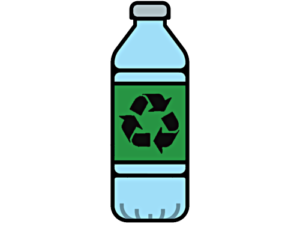
Recently, researchers from Cabrios and Université de Toulouse discovered an enzyme that breaks down PET, a material commonly used in disposable plastic bottles and food containers. Currently, PET breaks down (even assisted with enzymes) at a rate of only 1 percent over several weeks. The newly discovered enzyme’s rate is 90 percent over 10 hours. It is the fastest enzyme that has been discovered.
This enzyme will be used to speed up and increase the efficiency of the recycling process. Currently, when PET arrives at a recycling plant, there is a broad range of colors. To speed up the process the material is melted down, combining all the colors. Like paint, when one combines all the PET colors, it turns into a grayish-blackish shade. Few companies want to use this color for their packaging, as it is obviously not appealing.
So what happens to this gray, unappealing plastic? Most of the time, it is used for industrial carpets or low-grade fibers. This eventually ends up in a landfill or an incinerator. According to John McGeehan, a professor at the University of Portsmouth, “It’s not really recycling at all”.
The enzyme can break down the plastic more efficiently, with 90 percent of it being converted back into its basic materials. These materials can be reused to make plastic containers and bottles. It’s considered 10,000 percent more effective than the current enzyme.
But how else can we improve recycling? According to McGeehan, this enzyme only works on PET, as other plastics, like polyethylene have stronger bonds. For these plastics, techniques are being developed, including up-cycling, which is basically keeping the “grade” of plastic the same even after it is recycled.
The best way we can improve recycling is by reusing. Plastic bottles can be reused, refilled every day. Why use a new bottle if one doesn’t need to? Reusing food containers is fine too, just wash them out often. We can reuse plastic bags as liners for trash cans and recycling bins.
Recycling can be improved in many ways, but as scientists work on enzymes and alternate solutions, the best way to reduce waste is to reuse.
